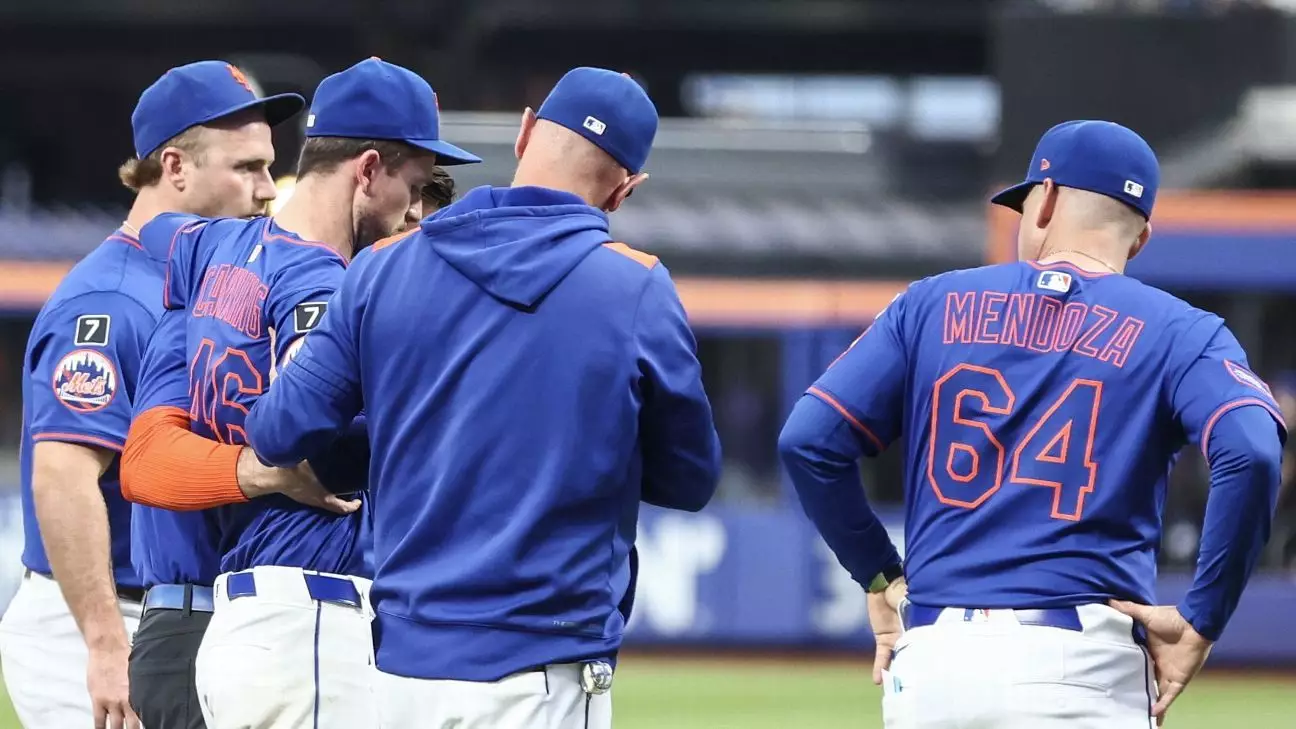The New York Mets’ pitching staff, already strained and fragile, took yet another devastating hit on a humid June night, as Griffin Canning was sidelined by what seems to be a significant Achilles injury. In a season riddled with setbacks, this latest development brings an unwelcome but telling moment to the forefront for the Mets: their pitching woes are more than mere bad luck—they’re a defining challenge demanding resilience and creative problem-solving. Canning’s injury, sustained during a routine defensive play, serves as a stark reminder of how quickly momentum can swing in the unforgiving world of Major League Baseball.
Griffin Canning: A Pillar Underneath Pressure
Griffin Canning entered this season as a key figure in the Mets’ rotation, carving out a promising trajectory after a tough 2023. His 7-3 record and impressive 3.77 ERA speak volumes about his growth and the important role he’s playing amidst a thin roster. Losing him isn’t just about the immediate absence of innings; it strikes at a larger core—the steady presence of a pitcher who has shown consistency and potential. This isn’t the injury of a fringe player but a setback to a valuable contributor who had begun to epitomize the Mets’ efforts to stabilize their pitching staff. The fact that Canning’s injury occurred during an off-balance, non-contact movement suggests the physical and mental toll that overuse and stress can impose, vulnerabilities often unseen until they catastrophically surface.
Pitching Depth Decimated: A Growing Crisis
To understand the gravity of Canning’s injury is to grasp the Mets’ broader pitching dilemma. This season, the rotation has faced a relentless string of injuries to leading players. Kodai Senga’s right hamstring strain and Tylor Megill’s elbow sprain have already sidelined two of the team’s top starters. Adding Sean Manaea’s recent diagnosis of a bone chip in his elbow layers on yet another injury that could keep the rotation limping well into the summer months. The Mets’ Opening Day plans have been essentially dismantled by an unyielding barrage of health problems, leaving manager Carlos Mendoza scrambling to patch the rotation and maintain competitiveness.
The Broader Implications: Testing the Mets’ Organizational Strength
What is most striking is the Mets’ reaction. There is an undercurrent of determination in comments from Mendoza and other club leaders—acknowledging the crisis but focusing on reinforcements and adaptability. Frankie Montas’ recent return offers a glimmer of hope amidst the adversity. Yet, this crisis invites reflection on the organization’s long-term approach to pitching depth and durability. Can the Mets’ front office continue to patch injuries reactively, or is this a clarion call for a strategic overhaul in how the club manages pitcher workload, rehabilitation, and scouting?
A Call for Resilience Beyond the Diamond
The Mets’ current situation goes beyond typical concerns over athletic damages; it underscores a harsh reality in professional sports—the constant risk of losing key contributors at pivotal moments and the need for unwavering resilience. This adversity could very well serve as a crucible that forges a tighter, more adaptive team culture. The Mets’ ability to weather this storm will hinge not just on the physical return of injured players, but on the organization’s capacity to maintain morale, innovate in player development, and integrate fresh talent without losing the fragile chemistry among remaining contributors.
While the Mets’ pitching rotation faces what seems like an insurmountable challenge, the team’s response in the coming weeks will reveal much about their character as a club. It is during such testing times that franchises either crumble or emerge stronger, and only time will tell which path the Mets will take. What we do know is this: the injury to Griffin Canning, painful as it is, highlights a greater narrative about perseverance and the relentless pursuit of victory despite adversity.

